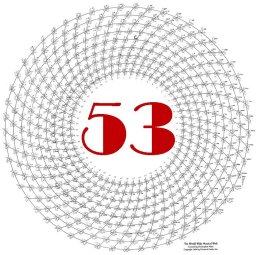11/6: Notating Scales / Inversions
Seventh Chords
Now let’s briefly list and label the various seventh chords starting on the note C. As I’ve promised before, we’ll discuss these in more depth in Chapter 14. The seventh chords which appear in traditional 12-eq classical music feature some kind of 3-limit or 5-limit seventh on top of a triad. I believe that jazz and blues composers evoke the seventh harmonic-based “septimal” minor seventh, which is considerably flatter in pitch than the sevenths we are used to. As we will see in Chapter 14, this “Blue Note” seventh is also considerably more consonant-sounding.
Figure 11-12 Seventh Chords
C7: the “dominant” seventh, can be C – E1 – G – Bb but the E1 can go up to E and the Bb can go up to B1b
C Maj 7: C – E1 – G – B1
C min 7: C – E1b – G – B1b
C min MAJ 7: C – E1b – G – B1
Cdim7: (diminished 7th chord) C – E1b – G2b – B3bb
Cs7: Septimal seventh chord, C – E1 – G – B1b
C s min 7: Septimal minor seventh chord, C – E1b – G – B1b
C min7 b5: C – E1b – G2b – B1b
If you would like to learn more about how tonal music works in 53-equal tuning, you can buy the entire book, The Grand Unified Theory of Music, in pdf form for $25 with hundreds of embedded musical examples of scales and chords from all over the world HERE.
A free introduction to what The Grand Unified Theory of Music offers is on this website and includes both text and a few musical examples from each webpage. If you would like to learn more about this chapter and the full contents of this entire e-book, you can buy The Grand Unified Theory of Music for $25, with hundreds of embedded musical examples of scales and chords from all over the world — and ideas for how to set up your computer system —
HERE.
You’ll get a personalized password you can use to see the entire e-book. Inside the full book, you will also get a link to the complete pdf file of this e-book, which you can read on your Kindle or similar device. The links to the hundreds of mp3 sound files – the same ones you can hear on the website — will also be included. This is “Version 1.0” of The Grand Unified Theory of Music. Because it is an e-book, additions, corrections and improvements in the sound may be added at any time. The Grand Unified Theory of Music is Copyright © 2018 by Christopher Mohr. All rights reserved.
One person per password. Sharing this password with others is a violation of copyright. Do not allow others to use your password or link to the pdf file!
